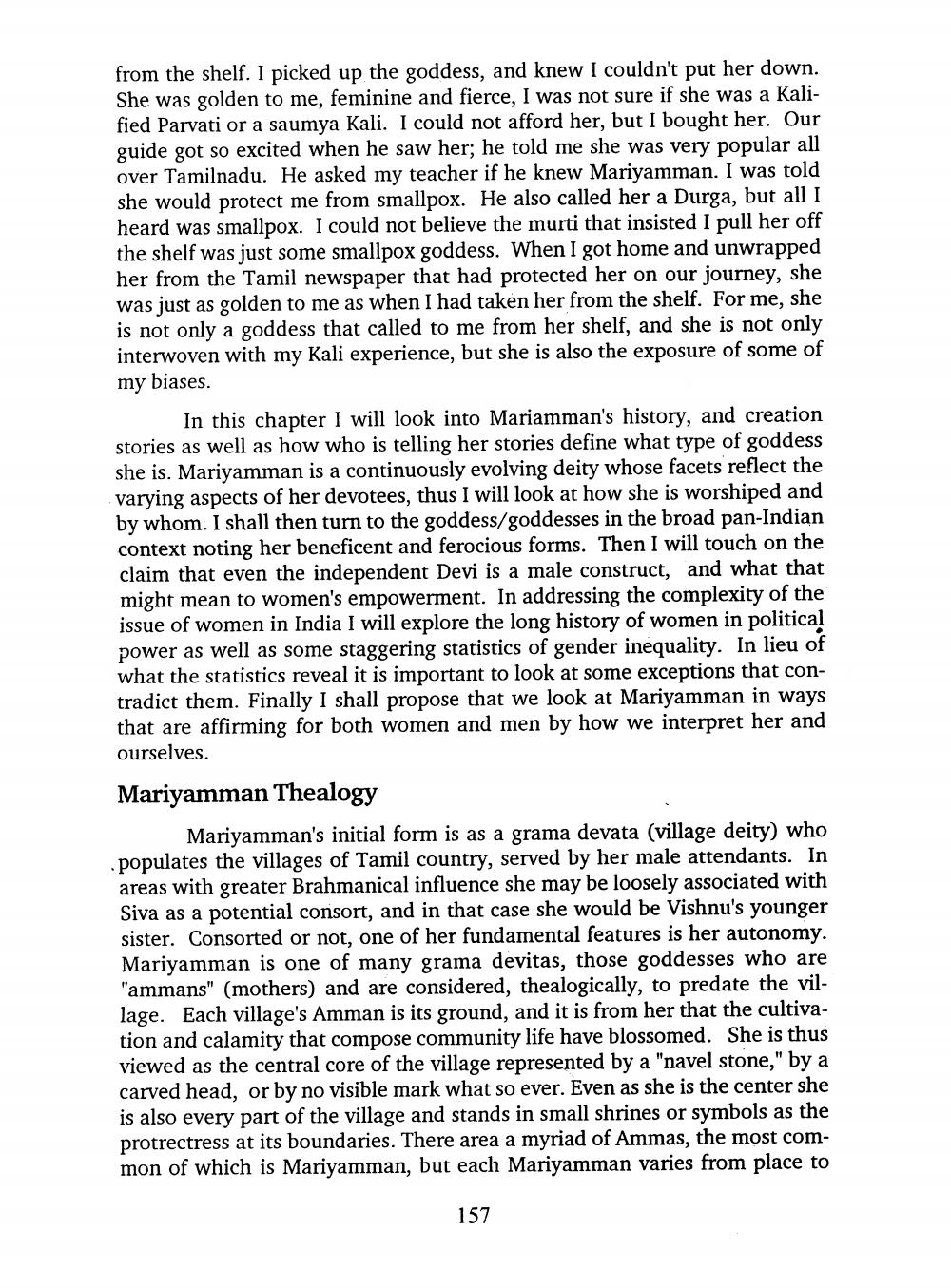________________
from the shelf. I picked up the goddess, and knew I couldn't put her down. She was golden to me, feminine and fierce, I was not sure if she was a Kalified Parvati or a saumya Kali. I could not afford her, but I bought her. Our guide got so excited when he saw her; he told me she was very popular all over Tamilnadu. He asked my teacher if he knew Mariyamman. I was told she would protect me from smallpox. He also called her a Durga, but all I heard was smallpox. I could not believe the murti that insisted I pull her off the shelf was just some smallpox goddess. When I got home and unwrapped her from the Tamil newspaper that had protected her on our journey, she was just as golden to me as when I had taken her from the shelf. For me, she is not only a goddess that called to me from her shelf, and she is not only interwoven with my Kali experience, but she is also the exposure of some of my biases.
In this chapter I will look into Mariamman's history, and creation stories as well as how who is telling her stories define what type of goddess she is. Mariyamman is a continuously evolving deity whose facets reflect the varying aspects of her devotees, thus I will look at how she is worshiped and by whom. I shall then turn to the goddess/goddesses in the broad pan-Indian context noting her beneficent and ferocious forms. Then I will touch on the claim that even the independent Devi is a male construct, and what that might mean to women's empowerment. In addressing the complexity of the issue of women in India I will explore the long history of women in political power as well as some staggering statistics of gender inequality. In lieu of what the statistics reveal it is important to look at some exceptions that contradict them. Finally I shall propose that we look at Mariyamman in ways that are affirming for both women and men by how we interpret her and ourselves.
Mariyamman Thealogy
Mariyamman's initial form is as a grama devata (village deity) who populates the villages of Tamil country, served by her male attendants. In areas with greater Brahmanical influence she may be loosely associated with Siva as a potential consort, and in that case she would be Vishnu's younger sister. Consorted or not, one of her fundamental features is her autonomy. Mariyamman is one of many grama devitas, those goddesses who are "ammans" (mothers) and are considered, thealogically, to predate the village. Each village's Amman is its ground, and it is from her that the cultivation and calamity that compose community life have blossomed. She is thus viewed as the central core of the village represented by a "navel stone," by a carved head, or by no visible mark what so ever. Even as she is the center she is also every part of the village and stands in small shrines or symbols as the protrectress at its boundaries. There area a myriad of Ammas, the most common of which is Mariyamman, but each Mariyamman varies from place to
157




